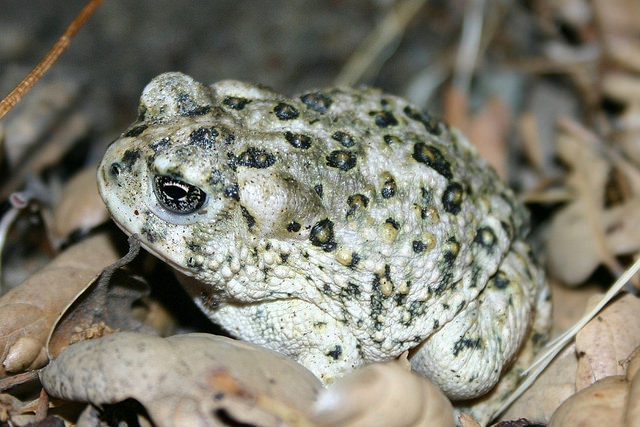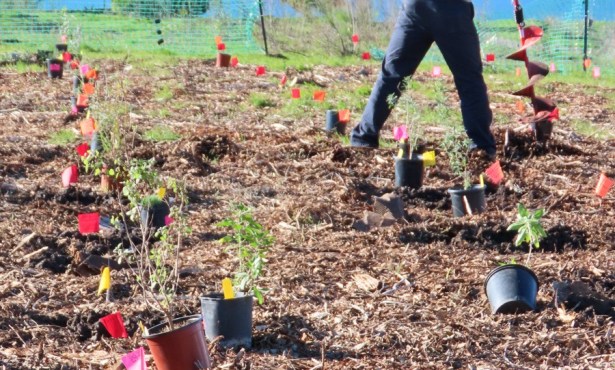Arroyo Toad No Longer Endangered?
U.S. Fish & Wildlife Taking Comments on Changing Species’ Status to “Threatened”

Though its range is widespread throughout California and Baja — including countless creeks, ponds, and waterways in Santa Barbara County — the arroyo toad is currently listed as “endangered” by the federal government, giving it the greatest species protection in the land. That soon may change, as the U.S. Fish & Wildlife Service is considering a downlisting of the species to “threatened,” which offers many of the same protections but suggests that the species isn’t in quite so dire a state as it once was.
To give us a better sense of the situation, the service’s senior biologist and arroyo toad species lead, Della Snyder-Velto, answered a few questions last Friday, which also happened to be the final day before her retirement. What follows is an edited version of her responses.
What’s so cool about the arroyo toad?
Well, personally I think the arroyo toad is kind of cute — for an amphibian! Most people who know about the toad and help protect the species’ habitat become pretty passionate about the little critters. Perhaps this is because the arroyo toad needs fairly pristine stream environments to survive, and these environments happen to be the kind of recreational places that humans love too. The arroyo toad has it hard enough, what with natural threats like droughts and floods and fires to contend with, much less human-caused threats to its habitat from dams and mining and agriculture and urban development and invasive species. That’s a tall order for such a small toad.
Why is helping the toad good for us?
By protecting the arroyo toad and its habitat, we are also protecting our favorite recreational places for our kids and grandkids. People can help with restoring habitat for the arroyo toad by enhancing riparian habitat and vegetation; relocating or removing confining levees to allow river-channel meandering and reconnection of rivers with their floodplains; removing dams, diversions, or other obstacles to sediment transport; and providing more water for instream flows.
How long has it been endangered?
The arroyo toad has been listed as an endangered species for 20 years.
Why is now the time to lessen its protections?
Although current threats to the arroyo toad remain similar to when the species was listed, ongoing conservation efforts are reducing some of the effects from threats. These include efforts to remove nonnative plant species (tamarisk and giant reed) and introduced predators (bullfrogs, green sunfish, crayfish) from arroyo toad habitats. Several major management plans that cover arroyo toad populations on federal lands and that include conservation measures for the species have been developed, and some arroyo toad habitat on non-federal lands has been conserved since listing.
How do dams play into this?
New dam construction, which likely caused the major decline in arroyo toads that occurred prior to listing, is not likely to occur in the future, but the operation of existing dams still poses a significant threat to arroyo toads. However, some progress has been made toward modifying dams to maintain a more natural hydrologic regime below the dam for the benefit of arroyo toads.
Does this mean that some of the areas that were closed due to its status may be re-opened?
The USFWS does not have the authority to close or reopen campgrounds or hiking trails in the backcountry on national forest lands. It should be noted that the protections the arroyo toad has now as an endangered species will still apply even if it is downlisted to a threatened species. A species is listed under the Endangered Species Act as “endangered” when it is at risk of extinction throughout all or a significant portion of its range. A “threatened” designation means it is likely to become an endangered species within the foreseeable future throughout all or a significant portion of its range. In either case, the act prohibits the species from being killed, harmed, or harassed and provides protections for its habitat.
To submit your opinion on whether the arroyo toad should be downlisted, file your comments at regulations.gov under Docket No. FWS-R8-ES-2014-0007 by November 17.



